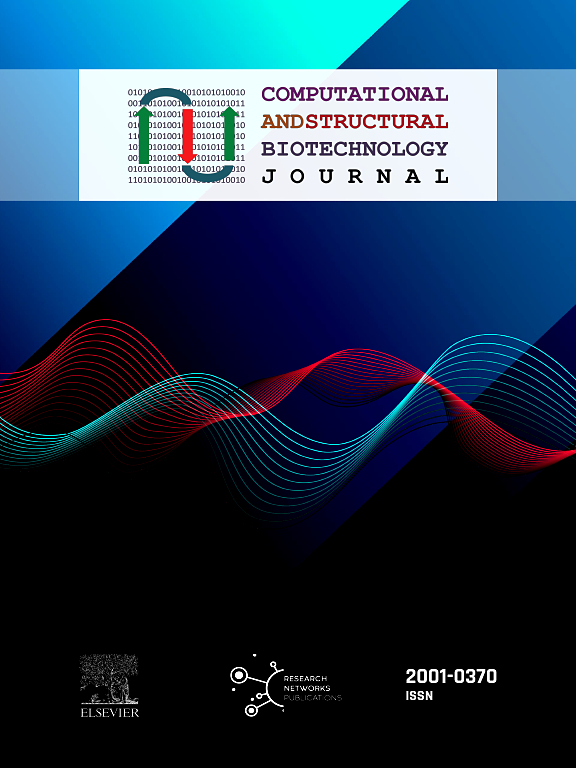Network-based estimation of therapeutic efficacy and adverse reaction potential for prioritisation of anti-cancer drug combinations
IF 4.4
2区 生物学
Q2 BIOCHEMISTRY & MOLECULAR BIOLOGY
Computational and structural biotechnology journal
Pub Date : 2025-01-01
DOI:10.1016/j.csbj.2024.12.003
引用次数: 0
Abstract
Drug combinations, although a key therapeutic agent against cancer, are yet to reach their full applicability potential due to the challenges involved in the identification of effective and safe drug pairs. In vitro or in vivo screening would have been the optimal approach if combinatorial explosion was not an issue. In silico methods, on the other hand, can enable rapid screening of drug pairs to prioritise for experimental validation. Here we present a novel network medicine approach that systematically models the proximity of drug targets to disease-associated genes and adverse effect-associated genes, through the combination of network propagation algorithm and gene set enrichment analysis. The proposed approach is applied in the context of identifying effective drug combinations for cancer treatment starting from a training set of drug combinations curated from DrugComb and DrugBank databases. We observed that effective drug combinations usually enrich disease-related gene sets while adverse drug combinations enrich adverse-effect gene sets. We use this observation to systematically train classifiers distinguishing drug combinations with higher therapeutic effects and no known adverse reaction from combinations with lower therapeutic effects and potential adverse reactions in six cancer types. The approach is tested and validated using drug combinations curated from in vitro screening data and clinical reports. Trained classification models are also used to identify novel potential anti-cancer drug combinations for experimental validation. We believe our framework would be a key addition to the anti-cancer drug combination identification pipeline by enabling rapid yet robust estimation of therapeutic efficacy or adverse reaction potential.
求助全文
约1分钟内获得全文
求助全文
来源期刊

Computational and structural biotechnology journal
Biochemistry, Genetics and Molecular Biology-Biophysics
CiteScore
9.30
自引率
3.30%
发文量
540
审稿时长
6 weeks
期刊介绍:
Computational and Structural Biotechnology Journal (CSBJ) is an online gold open access journal publishing research articles and reviews after full peer review. All articles are published, without barriers to access, immediately upon acceptance. The journal places a strong emphasis on functional and mechanistic understanding of how molecular components in a biological process work together through the application of computational methods. Structural data may provide such insights, but they are not a pre-requisite for publication in the journal. Specific areas of interest include, but are not limited to:
Structure and function of proteins, nucleic acids and other macromolecules
Structure and function of multi-component complexes
Protein folding, processing and degradation
Enzymology
Computational and structural studies of plant systems
Microbial Informatics
Genomics
Proteomics
Metabolomics
Algorithms and Hypothesis in Bioinformatics
Mathematical and Theoretical Biology
Computational Chemistry and Drug Discovery
Microscopy and Molecular Imaging
Nanotechnology
Systems and Synthetic Biology
 求助内容:
求助内容: 应助结果提醒方式:
应助结果提醒方式:


